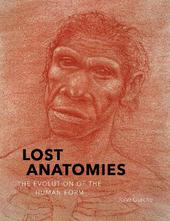
|
Lost Anatomies: The Evolution of the Human Form
Hardback
Main Details
Description
Renowned paleoartist John Gurche brings the traditional techniques of figure drawing and anatomical art to the portrayal of our hominin ancestors. The result is a visual record of the evolving human form that feels alive in a way no scientific illustration could match. While science provides an underpinning to Gurche's art, his work's primary purpose is to forge an aesthetic connection to the hominins that preceded us on Earth, capturing their humanity. With essays by leading authorities,Lost Anatomiescarries the story of human evolution from apes and early hominins; to Australopithecus; to archaicHomo sapiens, includingHomo erectus; to derived Homo sapiens, including Neanderthals and other species that are our most recent ancestors.
Author Biography
John Gurcheis one of the world's best-known artist-anatomists reconstructing early hominids. His work has appeared in the National Museum of Natural History, the American Museum of Natural History, and the Field Museum, as well asNational Geographicmagazine,Natural History Magazine, andScientific American. He lives in Trumansburg, New York.David R. Begun, Carol Ward, Rick Potts, Trenton W. Holliday,andMeaveLeakeyare leading paleoanthropologists.
Reviews"In this captivating collection of drawings and paintings, artist Gurche extrapolates the soft-tissue anatomy of various hominin specimins from their fossils, based on years of examining the relations of bone and tissue in modern apes and humans." -- Scientific American "an exceptional and beautiful collection of palaeoart that occasionally ventures into slightly psychedelic territory, without ever losing sight of the underlying science." -- National History Book Service
|